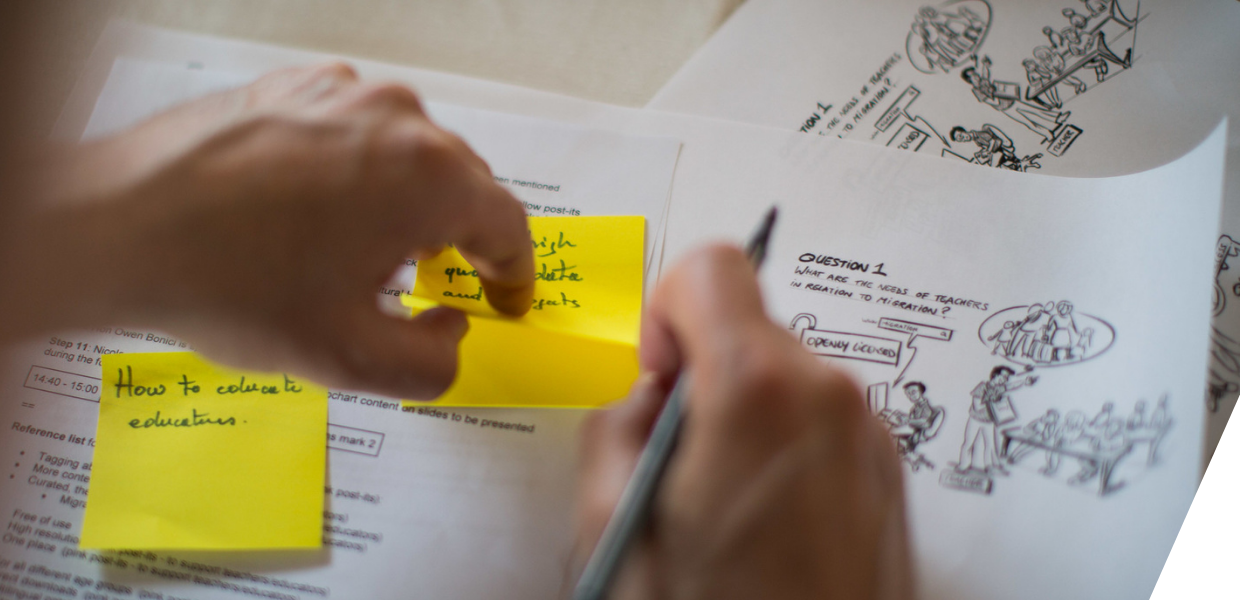Sense-making in the pandemic
There are events that suddenly make (apparently) disconnected pieces of information all come together: this was the effect of Europeana’s series of sensemaking workshops on Digital transformation in the time of COVID-19 which I attended in 2020 (two excellent facilitators, Jasper Visser and Michael Edson, led the workshops). Find out more about the workshops and Europeana’s work to build digital capacity.
The workshops triggered the emergence of a wealth of (dormant) ideas: they mostly emphasised the need (or urgency) to help cultural heritage institutions recover from the pandemic through knowledge exchange on engaging with remote audiences and bridging the digital divides prompted by the pandemic. What was missing was insights into how to engage audiences remotely through activities that are creative, original and (relatively) easy to set up. More importantly: the dialogical, creative and interactive dimensions of audience engagement needed to be emphasised.
With a team of European partners, I applied for and was awarded an EU grant: The GLAMers Erasmus+ project started in March 2021.
Research and findings
The project aims to understand how the GLAM sector uses digital technologies to engage with and serve the needs of young people during the pandemic. It seeks to create dialogue within the cultural sector about the challenges and opportunities of using digital media to benefit young people in a time of crisis and change.
A first result of the project was a European-wide identification of original initiatives organised by European GLAMs to reduce isolation and highlight the creativity of the crowd. We particularly sought initiatives that were designed to develop and deliver tactile, hands-on activities to families and young learners through the web.
By means of case studies, surveys and interviews with GLAM experts and amateurs, we produced the publication ‘Practices of digitally mediated youth engagement in GLAMs during the pandemic’ which is available here. The publication seeks to answer questions like: what kind of means cultural heritage institutions employed to connect and interact with their audience remotely? How creativity and imagination of young visitors was conveyed online? What concrete and original examples of engaging the audience remotely can act as sources of inspiration?
Engagement through events
The project has organised several events to share our learnings with cultural heritage professionals. For example, with the support of Europeana, in September 2021 we organised a webinar featuring three GLAM speakers directly involved in the creation of some of the 15 outstanding practices. The speakers were: Jennie Ryan (Museum of Literature Ireland, Dublin, Ireland), Tom Brink (Anne Frank House Amsterdam, The Netherlands) and Peter Aerts, (S.M.A.K. Municipal Museum of Contemporary Art, Ghent, Belgium). Watch the recording.
A series of training events for GLAM experts and amateurs started in October 2021. The first one took place on October 13. Speakers included Marta Kuliš Aralica and Vedrana Ceranja (Museum of Arts and Crafts (MUO), Zagreb, Croatia); Peter Aerts (S.M.A.K. Municipal Museum of Contemporary Art, Ghent, Belgium), Erik Boekesteijn (National Library of the Netherlands) and Maria Vähäsarja (EMMA – Espoo Museum of Modern Art). At the interactive workshop we explored how to implement a variety of digital audience engagement techniques. Watch the recording.
A second training event took place in November 2021. Invited speakers were Daphne Kouri (Museum of Cycladic Art Athens, Greece), Sylvianne Lathuilière (Museum of Contemporary Art, Lyon, France), Silvia Mascalchi (Uffizi Galleries, Florence, Italy) and Laura Pye (Liverpool Museums, Liverpool, UK). Watch the recording.
We are planning more training and knowledge exchange events, as well as a mentorship programme for GLAMs wishing to put in practice ideas implemented by pioneering cultural heritage institutions. Check The GLAMers website for updates!
We would like to thank Michael Peter Edson for all his support with the project: as a reviewer of our publication, as a facilitator and as a host of the online events to date.
Get involved
Are you a GLAM expert wishing to share how you engage your audience online? We collect practices and will share them publicly! Get in touch with us here.
Engaging with audiences also means being responsive to contemporary societal issues: climate change is one of them. The role of cultural heritage organisations in climate resilience is a current topic in many cultural heritage institutions. If you wish to learn more or play an active role, join the Europeana Network Association Climate Action Community and the Climate Heritage Network.


